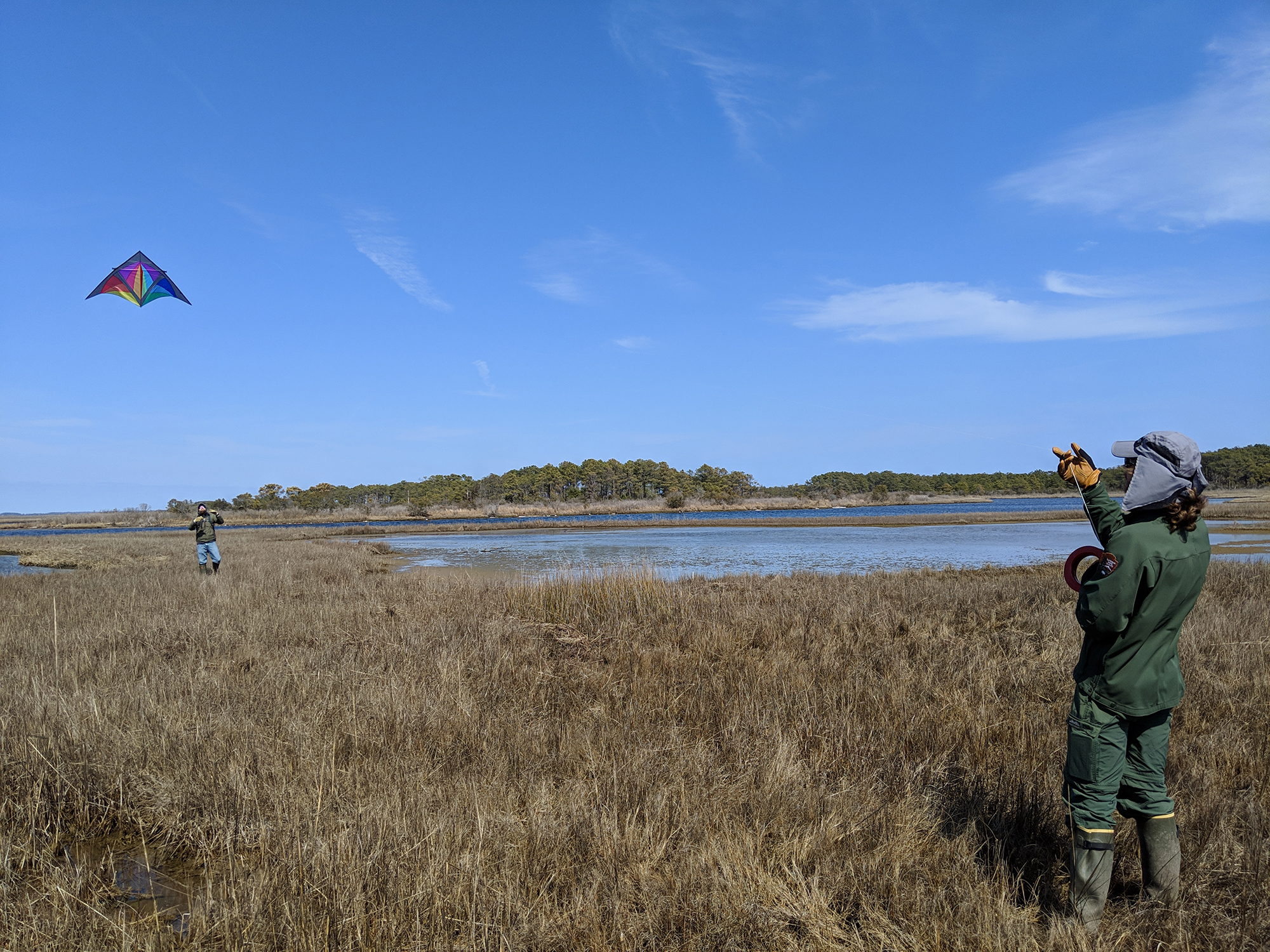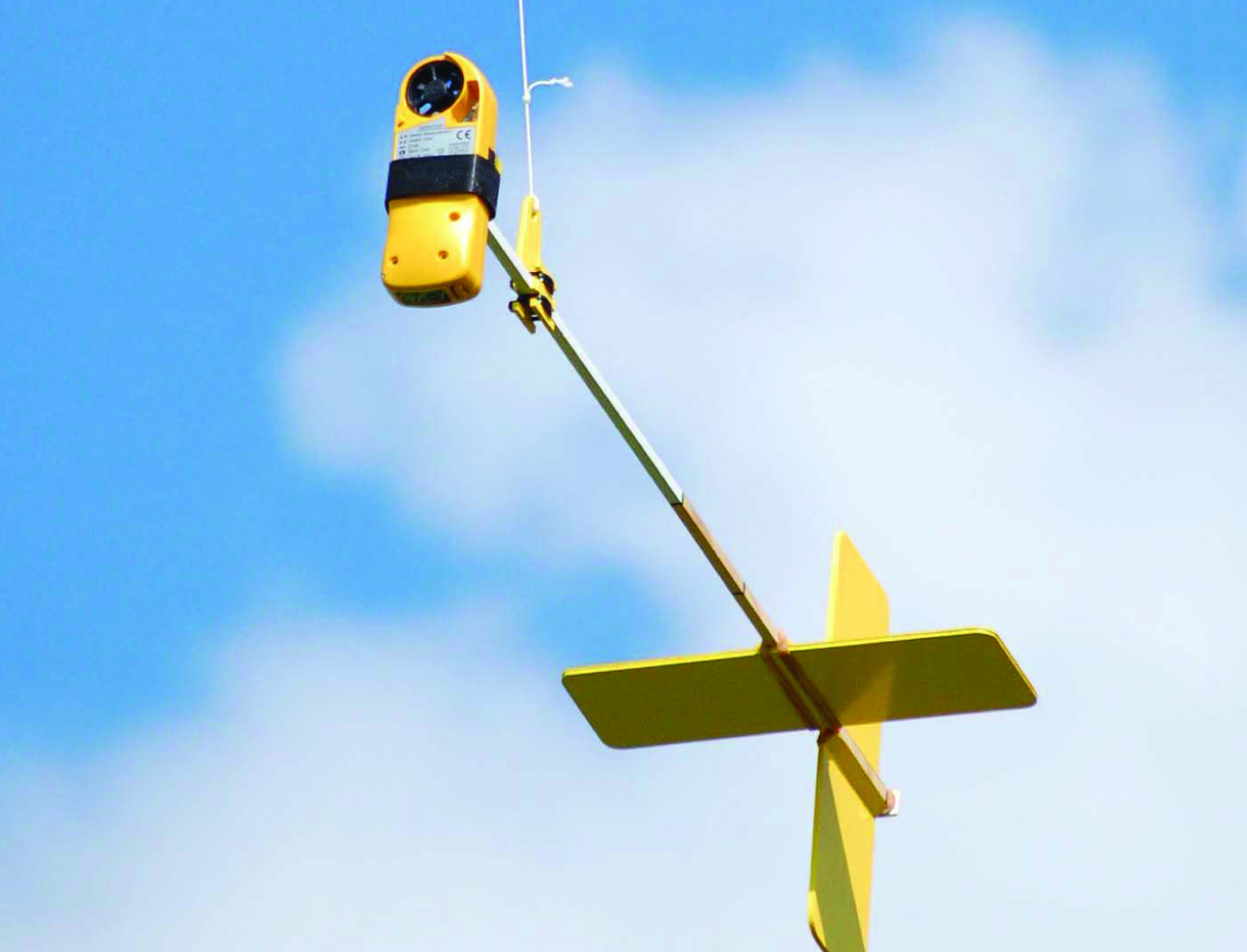
Aerodynamically stable and designed to hang from a kite string, Aeropods offer a low-cost, low-risk, opportunity for scientists and students to gather imagery and atmospheric data from an aerial perspective.
Geoff Bland, Research Engineer at NASA’s Wallops Flight Facility, Wallops Island, Va. and his team won the Educational Institution and Federal Laboratory Partnership award in 2020 from the Federal Laboratory Consortium for their Aeropod technology.
Aeropods can be fitted with sensors for aerial imaging, including color, multispectral, and thermal imagery, and in-situ measurements which require that the instrumentation be located directly at the point of interest and in contact with the subject of interest, such as temperature, humidity, wind speed, and wind direction. “We look at the Earth from space and from aircraft,” Bland said. “As we get closer and closer to the surface, we get higher-resolution data. In order to both get that resolution and capture the big picture, we need many measurements at many locations.”
Educational Opportunities
The AEROKATS and ROVER Education Network, is a NASA Science Mission Directorate Science Activation project allowing students at the middle school level and above to participate in data collection using Aeropods. Introducing science processes through kite flying at a young age makes science more accessible to a diverse and impressionable audience, Bland said.
“We were able to show that Aeropods had suitability for introducing students to NASA’s kind of observations,” Bland said, “including both in-situ and remote sensing measurements: essentially mimicking satellites and aircraft.”
“It’s easier to fly a kite than an unmanned aerial drone, which requires a higher budget and technical skill level,” Bland said. “This is by no means a replacement for drones. Rather it was always intended as a beginning step. You start with kites, you go to other platforms such as balloons, drones, aircraft, sounding rockets, then satellites; it’s a progression.”
While Aeropod technology provides an entry point into Earth science for students, the applications range much further. Bland and his team worked with NASA’s Jet Propulsion Laboratory, Pasadena, Calif. to use Aeropods to pioneer airborne in-situ gas measurements for volcanic emissions. “There’s a broad application of the technology to capture several measurements of interest,” Bland said, “specifically going after the local scale.”
Aeropods provide multiple applications for a wide variety of consumers. “The Aeropod concept enables extremely low-cost in situ measurements in the Planetary Boundary Layer or lowest part of the atmosphere, an area of great interest in Earth Science,” said Matthew McGill, Goddard’s Earth Science technologist, “and as such, Aeropods provide a great opportunity for engaging educational institutions in NASA research. Geoff has worked tirelessly to develop and license the Aeropod technology and to engage with educational groups.”
Adaptability to a wide variety of measurements, ease of fabrication, and simplicity of use are the key features of the Aeropod that enable widespread use, Bland said.
“Kites as a lifting platform enable learners of all ages, and researchers, to get an aerial perspective, uniquely valuable in capturing the perspective of the world around us, he said. “This combination is a valuable tool, thanks to the vision and support of NASA’s technology development and science support programs.”
By Madison Arnold
NASA’s Goddard Space Flight Center in Greenbelt, Md.






























